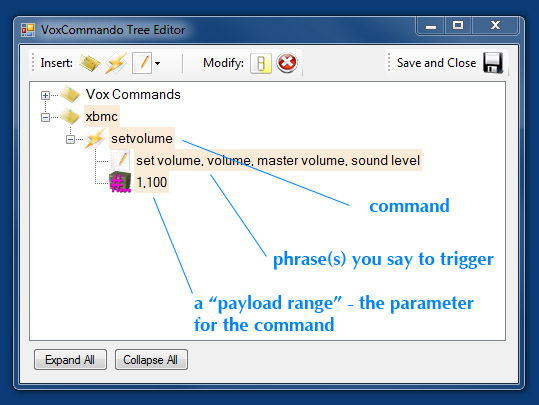2010-07-07, 23:31
a little more on the setvolume command might help, where we use a "payload range":

so you could say for example: "master volume 58" and it would generate the command volume(58) and send it through the web interface.
you can also use a "payload list", which is a list of strings separated by commas, which you could use for example for your playlists,
and we can use xml payloads, which are lists, stored in an external xml file. Each item, in the list can be assigned multiple names or triggers that translate to it's value. This is still hands on (text editor), but it works. I need to develop an editor!
it looks like this (for using x10 devices):

so you could say for example: "master volume 58" and it would generate the command volume(58) and send it through the web interface.
you can also use a "payload list", which is a list of strings separated by commas, which you could use for example for your playlists,
and we can use xml payloads, which are lists, stored in an external xml file. Each item, in the list can be assigned multiple names or triggers that translate to it's value. This is still hands on (text editor), but it works. I need to develop an editor!
it looks like this (for using x10 devices):
Code:
<PayloadsRoot>
<payload>
<value>a1</value>
<phrase>living room lamp,lamp,lamp1</phrase>
</payload>
<payload>
<value>a2</value>
<phrase>spot one,living room lights,living room spot</phrase>
.
.
.
</PayloadsRoot>



 ) So it seems like a library with that many entries may bloat the voicecommands.xml if each artist, track, album etc were to have a unique entry. Just wondering if you have any more tricks up your sleeve for handling media by name calls.
) So it seems like a library with that many entries may bloat the voicecommands.xml if each artist, track, album etc were to have a unique entry. Just wondering if you have any more tricks up your sleeve for handling media by name calls.